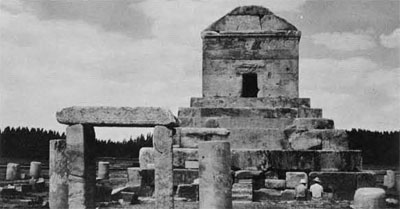
In spite of a long and creative past it is only with the advent of the dynasty named Achaemenid after its first known member Achaemenes (Old Persian Hachamanish) that Persia really enters world history. During the more than two hundred years (550-331) of the greatest empire the world had so far seen, stretching from the Mediterranean to the Indus, from Egypt to the Caucasus, the Persians and their great rulers Cyrus, the unjustly defamed Cambyses, Darius, and their successors deeply influenced the course of events and the fate of many peoples.
In many ways this Persian highland people, still half nomadic, and their leaders who had suddenly got a whole world to rule, were rather unsophisticated. A simple creed ruled their lives, and various traditions, possibly idealising, picture them as rustic and austere. They were said to teach their sons mainly three things: to ride, to shoot with the bow, and to tell the truth. But such simple skills and virtues were not enough for the old, complex, and disillusioned world of the Near East. As inheritors of the power and also of the traditional ambitions of the age-old empires before them, the Persians soon found that they had to vie with all the royal splendor of the past and had to create their own imperial and monumental art to impress the world and to express their own particular ideology—to propagandize the new tolerance rather than the old terror. In many ways the Persians surpassed their predecessors and created some of the most impressive monuments of imperial and imperialistic art ever seen.
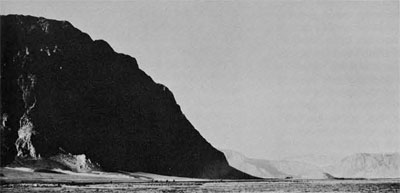
There is no lack of written information on the Achaemenids and their time. There are both official and private documents, in Old Persian, Elamite, Babylonian, Aramaic, Greek, Egyptian and Hebrew, etc. Yet, much of our understanding of the people and its culture must come from the archaeological study of their material remains. It is understandable that interest is dominated by the palatial residences of Pasargadae, Susa, Ecbatana, Persepolis, and to some extent by Babylon and other places in the west and now also in the east, as shown by the remarkable site Dahan-i Ghulaman in Seistan which is being explored by an Italian mission. Of interest also are the sanctuaries and the royal tombs such as Naqsh-i Rustem, and the monumental rock reliefs and inscriptions, as, for example, the important historical text at Behistun which once decisively furthered the decipherment of ancient oriental cuneiform writing. These monuments, admittedly, give a slanted picture of the Achaemenian world. They are mainly royal and dynastic, expressing the values and the visions of a limited, dominating upper class within a static, feudal and hierarchic society. We have the palaces and some governors’ residences but rarely the more modest dwellings of ordinary Persian men. We find in and around them the sumptuous gold, silver, and stone ornaments, weapons, and utensils of the upper class, but less of the everyday life of the commoner. We know the names and to some extent the concerns of kings and of nobles, but not those of the people. Our evidence has further complications. We see an official, propagandistic art revealing more of how the Achaemenid rulers wanted to see the world than how it really looked. In their imagery and their dignified texts little or nothing is discernible of all the convulsions of contemporary history. Instead, we see calm and beautiful dreams in stone of a benign, religiously sanctified royal power and of a commonwealth of peoples peacefully and even lovingly gathered around the throne in order to sustain the King of Kings in his struggle for Truth against the Lie, for the good forces of cosmos against the powers of chaos. We know that this is, by far, not the whole truth. This empire, like all empires, was built upon the subjection and the suffering of many peoples. Yet, in historical perspective, even as a dream theirs was a new and respectable one, and there was probably more justification in the claims of a Cyrus or a Darius to righteousness and tolerance in his dealings with the world than in those of most other Oriental absolute despots.
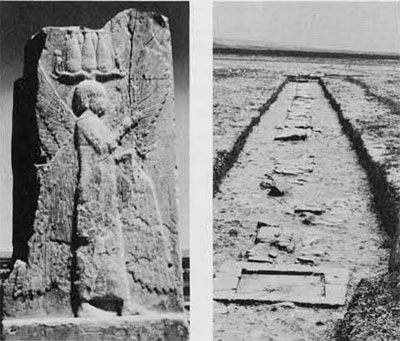
(right) Watercourses in the gardens around the palaces at Pasargadae, currently being excavated by the Archaeological Service of Iran.
Each of the main Achaemenian sites is in its way unique. The old Median and the Achaemenian summer capital Ecbatana still awaits exploration underneath modern Hamadan. The scholarly world is impatiently looking forward to the serious and devoted research necessary (and now planned) to reveal the hidden aspects of this important site. Lacking Ecbatana the searcher for Iranian precursors of Achaemenian royal architecture has been in the last decade, at least in part, consoled by the splendid sites uncovered by American and British scholars at Mannaean Hasanlu and at Median Nush-i Jan, Baba Jan Tepe, and Godin Tepe.
Susa, for almost a century the main site of French exploration in Iran, has contributed much important material from the Achaemenian period: architecture, the fine glazed and unglazed tiles ornamented with representations of guards, animals, and symbolic plants, and, not least, many important texts. However, in spite of the fact that Susa was the main Achaemenian capital, because of its traditions and geographical position it is so strongly Elamite-Mesopotamian that it is not really the best representative of typically Achaemenian creativity. Apart from the Behistun relief and inscriptions, which have been studied not least by American scholars and recently thoroughly investigated by the German Archaeological Institute, the sites and the monuments of the province of Fars around Shiraz constitute the main assembly of representative Achaemenian creations.
Here is the much ruined, prestigious old capital of Cyrus the Great and henceforth the coronation city of the dynasty, Pasargadae in the Pulwar plain. The site is dominated by the soft hills of the horizon and the huge, unfinished stone platform in well-wrought ashlar style of a Greek type with staircases, projections and recesses. It was probably planned originally as a lofty citadel not unlike the similar platform at Persepolis. Below in the plain are the ruined Zendan-i Sulaiman tower and, in a garden-like setting, the three palatial buildings with their annexes, decorated with sadly fragmentary sculptures of demonic and royal figures and once exhibiting long and many-columned porticos. There is, not least, the noble, cella-like building on six tiers which may safely, in spite of recent doubts, be identified as the tomb of Cyrus. Pasargadae has been much explored, especially by E. Herzfeld, Ali Sarni, and lately by D. Stronach and the British Institute of Persian Studies. It has given much important information on the origins and the first phase of royal Achaemenian art, partly under considerable Greek influence and in many ways different from the palatial art of Darius and his successors.
Some fifty miles away is the main Achaemenian monument, the remarkable and enigmatic palatial city called Parsa by the Persians and Persepolis by the Greeks, and its close-by associate, the royal necropolis at Naqsh-i Rustem with rock-cut tombs and the strange tower Kaaba-i Zerdoscht. Both sites have been explored and magnificently published in three great volumes by the University of Chicago under E. Herzfeld and, especially, E. F. Schmidt. In this region we can follow an Achaemenian ruler on his way from his accession to the throne to the grave and learn what he thought essential in life and what last message he wanted to convey to posterity. In dignified inscriptions on their graves the rulers tell about the great god Ahuramazda who created the world and created happiness for man and kingship for the Achaemenids. In front of the huge, cross-shaped facades of the tombs with their scenes of sacrifice and devotion at the fire altar, stands the much discussed tower building (temple, tomb, archive, or something not yet guessed at) bearing testimony far beyond its Achaemenian origins to its great importance also in other times, by the most interesting inscriptions of the Sassanian ruler Shapur I and the prime minister Kartir.
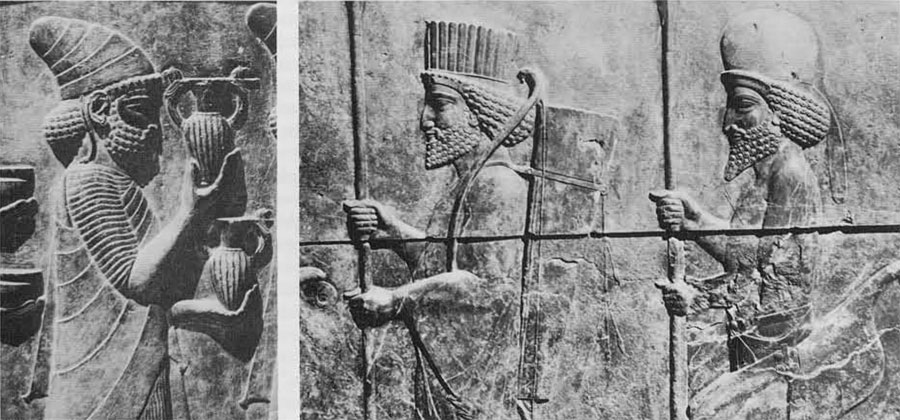
The glory of the Achaemenids is, at least in our modern eyes, Parsa-Persepolis. It was planned and first executed by Darius after 520 and, finally, destroyed by Alexander and his Macedonians in 330, some say in a drinking orgie, others seeing it as a retaliation for the Persian destruction of the Acropolis of Athens in 480/479. After having been further destroyed by stone looters and fanatic iconoclasts, it is now being slowly and carefully reconstructed on paper and partly rebuilt by the Italian ISMEO Mission under the direction of G. Tilia.
Beneath the scraggy Kuh-i Rahmat, with a view over the wide plain, is the high platform of Parsa, built of large, well-wrought blocks and with monumental stairs leading up from the plain. On the platform the visitor is met by a huge gate with colossal winged bulls and bull-men guarding the entranceways leading on to the many buildings with their richly decorated substructions and staircases, their well-cut doorways opening into great halls with forests of towering columns crowned by symbolic animals. Reception halls alternate with buildings supposedly used for banquets, private residences, a harem, and a treasury, all constructed partly in mudbrick long since vanished, partly in beautifully worked limestone with floral decorations or with long suites of bas-reliefs. There are the often repeated struggles of the lion and the bull, probably with some cosmic or metaphysical significance, the struggles of the royal hero with various monsters, sphinxes guarding a holy plant, various scenes with the king and his servants, and, not least, the exciting processions of innumerable nobles, guards, servants, and tribute-bearers from all over the empire carrying lovingly depicted gifts to the Great King. Above it all hovers the god Ahuramazda in a winged disc, and in their texts the kings humbly concede that here everything of beauty was made with the grace of Ahuramazda.
Such magnificent and complicated remains as these naturally confront the archaeologist/historian with many problems. For many years scholars have been debating how this architecture and art came into being and its relation to the modest local traditions and to those of other cultures. An important cuneiform text in Susa appeared to supply the answer. In this so-called Foundation Charter, Darius enumerated the origins from all over the empire of the materials used and of the artisans employed in the building of the Susa palace. Accordingly, Greeks and Lydians were thought to be behind all the beautiful stonework in the Achaemenian palaces, architectural as well as decorative. Such exaggerated views of all the debts of Achaemenian art to foreign sources are now being challenged and a more balanced appreciation has been attempted. Most scholars, while acknowledging the fact that the Persians borrowed many forms and conventions from the architecture and art of the older, surrounding peoples with their long traditions, now agree that there is something in this art which may rightly be called Achaemenian, a specific style testifying to both the will and the power to transform the foreign impulses into something exclusively and typically Iranian.
Another point of interest in recent years has been the study of the technical and organizational aspects of how these great building projects came into being. The publication of important Elamite administrative documents from Persepolis by G. Cameron and R. T. Hallock has revealed much pertinent material with lists of workmen according to nationalities and tasks and wage levels. This information can be correlated, to some extent, with a careful analysis of the buildings from a technical and constructional point of view. The fine and patient work of the Italian Mission at Persepolis and investigations elsewhere are now producing the evidence necessary for a new understanding of these extraordinary feats of organization and of craftsmanship. A related problem is the close study of the bas-reliefs, with an assessment of the divergences in style and the evidence, so far unnoticed, for the distribution of specific tasks to different groups of workmen. An aesthetic analysis of the artistic principles of this remarkable relief art still remains to be done. We know too little about the principles of composition, the conventions, the Achaemenian conceptions of time and space, etc. Not least interesting and important is the problem of the polychromy of these reliefs. They now strike us as very calm and dignified, but in the light of recent research in Boston they must in reality have originally looked quite different, perhaps too different to please our puristic modern tastes.
In spite of several important studies in recent years, the exploration of the subject matter of this rich relief decoration is still a promising field. Much knowledge of the organization of the empire and of its ethnography may be obtained from the numerous representations of the tribute-bearers and the noble Persians and Medes introducing them. The ceremonial surrounding the Great King may be further elucidated. The symbolism of all the animals and plants remains to be established. The value of the representations for the history of Iranian religion and for the problem of the creed of the Achaemcnian kings may have been underestimated so far. The recent publication of Aramaic texts from the Persepolis Treasury with their fascinating hints of the haoma rites and the cult of the god Mithra by high officials and officers, as interpreted by R. Bowman, has added another dimension to these discussions. The relations of this monumental art of the Achaemenian centers to that of the different provinces in the west and in the east also have to be further elucidated. Archaeological finds testify to the wide spread of Achaemenian culture and influence not only to the old cultures in the west but also to India, Siberia, and even to China.
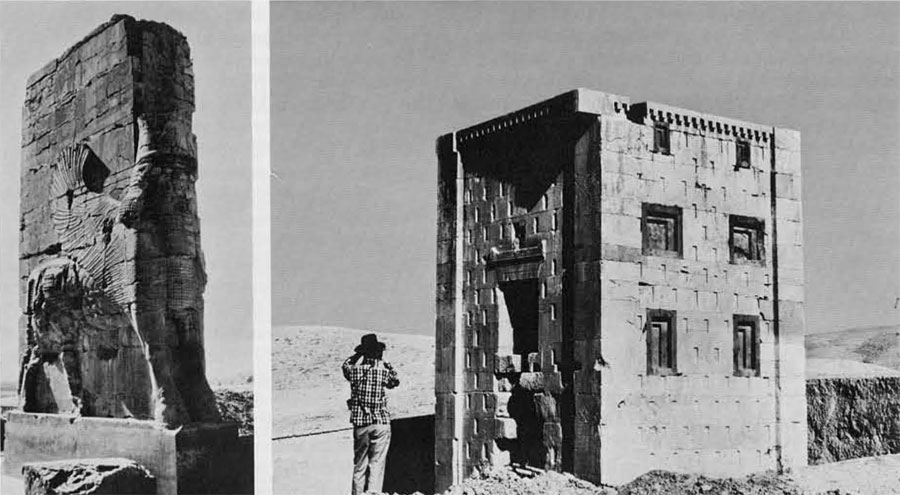
Thus, in spite of much successful excavation and research, there are still many problems which await their solution and which make Achaemenian archaeology an exciting and varied field of inquiry, where all kinds of evidence, written and archaeological, monumental and minor, trivial and precious, are relevant for the deeper understanding of Achaemenian culture. Of all these one major problem must be mentioned here: the unsolved riddle of the ultimate meaning of a place like Persepolis. Is it just an expression of the imperial ambitions of the Achaemenid kings, a propagandistic monument to their power? Although this is, no doubt, partly true, scholars seem inclined to agree with A. U. Pope, R. Ghirshman, K. Erdmann, and others that Persepolis is not only a token of great temporal power but that it has another dimension as well. It is possible that Persepolis, which never played an important part in the politics or administration of the empire and was never mentioned by Greek sources, otherwise so talkative, until after Alexander, was the ritual center of the Achaemenian world. Various details of the sculptural decoration point to Persepolis as being a kind of sermon or prayer in stone representing eternally and having the images re-enact eternally the important rites of the Persian New Year, the Now Ruz. At this occasion the world was threatened by the evil forces of chaos and had to be conquered and created anew. This was originally done by a god and now symbolically by the king. It is possible that Persepolis was precisely the place where these rites were enacted. This was then the place where representatives of all the peoples of the empire came together, brought symbolical gifts to the Great King and partook in the ceremonies of the New Year drama and festival, including processions, banquets, receptions, bringing of gifts, maybe some ritual fight against the chaos monster and, finally, the enthroning of the Great King and the carrying of his throne while rejoicing at the auspicious beginning of a new year and the continuance of the good world order. Ingenious attempts have been made to reconstruct these rites in detail from the disposition of the palatial buildings, from the relief decoration and other indications. Unfortunately these interesting suggestions are not rarely contradictory. Much remains to be done and more analysis is necessary both to fix the precise function of the different buildings and to establish what is conventional and what is specific in the reliefs.
Thus, the idea is both ingenious and, no doubt, basically correct but has to be further investigated. A recent suggestion that Persepolis is a kind of astronomical observatory for the establishment of an Achaemenian Mean Time in connection with the New Year rites is perhaps a little far-fetched in spite of some interesting observations on the orientation of the platform and its buildings.
Thus, Achaemenian archaeology today is a lively and controversial field, being in a way the study of the great world power during those fateful centuries when Greek civilization flourished so brilliantly, not uninfluenced by the great Persian power, and when important thoughts and creeds were born in both east and west. In the center of this world was the Achaemenid empire, for a long time a bit out of the historians’ focus because of the predominantly Greek perspective often applied to it as a historical problem. We are now slowly coming to an understanding of the importance of the Achaemenids and their empire as the creators of some relative peace and the disseminators of civilization and culture over vaster areas than ever before. To some extent even their archenemies, the Greeks, were closer to a true appreciation of the Achaemenids in their often expressed admiration for things and values Persian and in their choosing of Cyrus the Great as the prototype of the ideal ruler and king.
